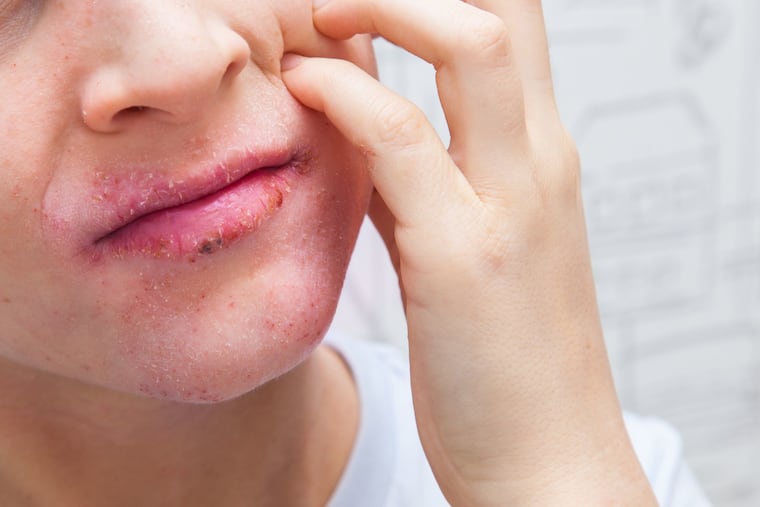Medical mystery: What caused unusual blisters and itching on a boy with eczema?
I stepped into the room ready for a quick visit with a child with mild eczema and a fever, but when I saw him scratching uncontrollably, at a rash that affected a large portion of his body, I quickly realized that this was more than a mild eczema exacerbation.

It was an unusually busy day in our sick clinic. Pediatrics is usually a predictable profession with the “busy time” during the winter, when children are in school sharing pencils, germs and winter-time viruses such as influenza and rhinoviruses, which cause the tell-tale cough, runny nose and fevers that bring concerned parents through our doors in droves.
But this was spring — a time to catch your breath, catch up on charts, and treat more benign conditions such as allergies and poison ivy. I signed up to care for the next patient, who was a 7-year-old boy with a medical history of seasonal allergies and mild eczema. His chief complaint was an “eczema flare.”
His chart noted that he had a low-grade fever of 100.8, which was a little unusual for a child with eczema unless he had something else going on, such as a viral infection.
I stepped into the room ready for a quick visit, but when I saw him scratching uncontrollably at a rash that affected a large portion of his body, I quickly realized that this was more than a mild eczema exacerbation.
His exam was all within normal limits except for his skin. Surrounding his lips were multiple crusts and some large blisters. On his trunk he had almost half of his skin affected with multiple papules — small raised bumps — with some crusting. The folds of his elbows and behind his knees were also affected with crusts and papules and his mother continued to remind him not to dig his nails into these areas that were obviously extremely itchy for him.
His mother stated that his typical eczema consisted of dry skin, with areas around his elbows and knees sometimes getting a little red, but never anything close to this.
He also had some papules and small blisters on his hands and feet. This pattern pointed me to a combination of diseases that, separately, are usually mild, but in combination, potentially more severe.
Solution
There is a potentially serious condition in which a child with eczema gets infected by a herpes virus (cold sore virus), which gets into the skin and causes eczema herpeticum. Children with this condition usually appear ill and have areas of their eczema that ulcerates and leaves small craters in the eczematous skin. Many times, these children are hospitalized for intravenous antiviral medications as well as antibiotics.
My patient didn’t have any of these crater-like areas, and besides his uncontrollable itching, he didn’t seem very ill. Putting together his symptoms and his physical exam findings, especially the location of his rash, I came up with the diagnosis of eczema coxsackium.
Eczema is an extremely common skin condition, especially in childhood. Externally it presents with dry, inflamed areas of the body that are treated with moisturizers and topical steroids. Microscopically, eczematous skin is immunodeficient, and is sometimes infected with a slew of germs from bacteria, viruses, and fungus.
Coxsackie virus is also very common and often presents in children under age 5 in the summertime, producing small blisters on hands, feet and inside the mouth, hence the common term, “hand-foot-mouth” disease. This is usually caused by a type of coxsackie called A16 and is termed “classic” coxsackie.
Eczema coxsackium is eczema co-infected with coxsackie virus A6, not A16. This disease usually affects older kids, has more fevers associated with it, and has more crusting and larger blisters than the classic form of hand-foot-mouth, hence the term, “atypical” coxsackie.
Eczema coxsackium must be differentiated from the potentially more severe eczema herpaticum to ensure proper treatment. We treated this patient’s eczema more aggressively with stronger topical steroids, more copious moisturizing, and Benadryl for his nighttime itching.
In a week, his eczema transitioned to his typical small patches and his face was clear of all lesions as his immune system cleared the virus from his system.
At his follow-up appointment, his hands were also clear of the rash and his fingers were busy clicking away at a video game instead of scratching uncontrollably at his skin.
Daniel R. Taylor is an associate professor at Drexel University College of Medicine and director of community pediatrics and child advocacy at St. Christopher’s Hospital for Children.